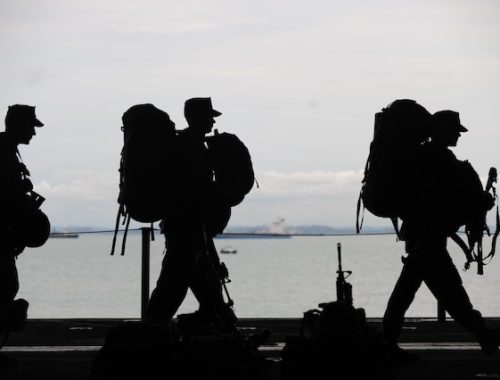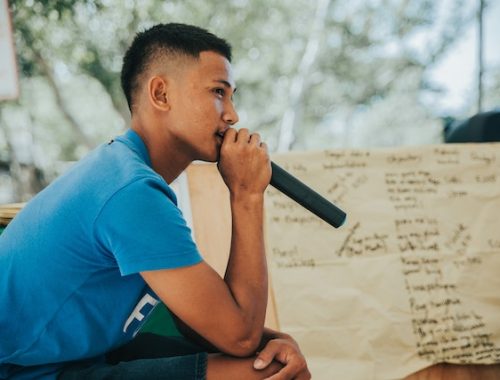How Russian-europe Relations Deteriorated Due To The Recent Events In Ukraine
Table of Contents
Summary
The original answer is correct.
This is an introduction.
Conflict in Ukraine
Commerce of Central Asian States with Russia and China
One Belt One Road Initiative Roadmap
Summary
This paper examines Russia’s relationship with Europe, focusing on the long-standing history between Russia and Ukraine. It also shows how Russian-European relations are deteriorating due to recent events. These events in Europe explain how Russia turned east to form alliances. But, they find it equally frustrating because of increased competition in Central Asia. This paper summarizes how Russia is facing increasing roadblocks in becoming a regional power within Eurasia. It also provides suggestions for how Russia could reexamine its relations with Asia.
IntroductionRussia’s contribution to the geopolitics of Eurasia today cannot be underestimated. Russia’s role in the modern geopolitics of Eurasia cannot be understated, despite the disintegration of the Soviet Union. This paper examines Russia’s Eurasia activities and explains why Russia struggles to influence countries in Asia or Europe. Vyacheslav Nikolov, chairman of Duma’s Education Committee, felt that Russia’s differences with the West made it difficult for them to have good relations. He argued that Russia was as much an Asian part as Europe. (Rachman 2016, page 183). Nikonov claimed that Russia’s modern heritage is derived from China via Mongolians and not the West. It is possible to trace back China’s history of the tax system and communication system. Peter the Great, the Russian Revolution’s first tsar, was the one who advocated for a European tax system.
Russia’s relations to Europe were shaped by Russia’s post-Soviet Union break-up. Russia now has no choice but cooperate with Europe, and the West. It is also possible to observe that Russia seems like it is buying time to regain strength until the end of 2000s, when Russia’s resurgent self-proclaimed itself. Russia’s actions show that, while energy dominance remains its primary foreign policy tool it is not afraid to use force of arms to protect its sphere against West-encroachment. Russia’s actions in military matters were most prominent in Ukraine and Georgia, both in 2008 and 2014.
The conflict in Ukraine Both Russia and Ukraine share many similarities. This is due to the fact that both countries have similar languages and families. Although the majority of Ukrainians speak Russian and Ukrainian, there are large numbers of Russian-speaking Ukrainians in the eastern and northern parts. Russia has its Black Sea Fleet Base in Sevastopol which is a strategic Black Sea port. Russians are a majority of the Crimean population. This is not surprising given that the Crimean Peninsula used to be part of Soviet Union up until 1954, when it became part of Ukraine. Many Ukrainians have worked in Russia and Russia has made billions of dollars in Ukraine. According to Ukraine’s 2013 statistics, Russian investments represented 7% of all foreign investments in Ukraine. Ukraine is considered to be the birthplace Orthodox Christianity, Russia’s official religion. Ukraine was an important part of Russia’s empire. After losing it to Nazi Germany in 1942, the Soviet Union had to take it back. The USSR lost Ukraine as the most important Soviet republic.
After the events of Ukraine, Russia began to lose its relationship with the European Union. This all started when President Viktor Yanukovitch refused to sign a deal that would have allowed Russia to join the European Union. Protestors interpreted the demonstrations as biased in Russia’s favor and violent protests erupted, with the pro-Western Ukrainians removing the government. Russia’s President Vladimir Putin understood this coup to be a Western-backed attempt at weakening Russia’s “Eurasian Union” and annexed Crimea. Later, Putin joined the Donetsk/Luhansk militants. The EU interpreted this as Russia’s act of aggression against a former Soviet country, while Russia claimed it was an attempt to stop Western encroachment. Nikonov believed that America’s goal in Eurasia, and by extension the EU, was global dominance. Ukraine was meant to be an Eastern European stronghold to limit Russia’s influence. An international political litmus test can be used to evaluate the annexation and subsequent denial by non-Western democracies like South Africa, India, Brazil and India regarding Russia’s annexation.
In response, Russia’s aggression in Ukraine caused the Eastern European countries that bordered it to begin to arm themselves. Lithuania restored conscription and increased defense spending. Three guides were published on war and emergency survival. Estonia has increased the training of its armed forces and encouraged citizens to join arms. Sweden reintroduced conscription. The European Union released “a list of sanctions” against 21 Russian and Ukrainian officials. These sanctions now include travel restrictions and assets freezing for “150 people and 38 businesses” who have ties or are Russian citizens. Germany is an exception to Europe’s growing hostility towards Russia. Despite opposition from eastern and central Europe, the NordStream 2 gas pipeline, which would bypass Ukraine and Poland, is gaining momentum. Germany has supported the project with German-made equipment. On 15 May 2018, the Energy Minister of Germany visited Russia to discuss joint ventures in energy.
Germany is still the European country that has the best ties to Russia in spite of the increasing hostilities from other European states. With Russia still being the major energy supplier to Europe, and almost 70% of all energy exports going for Europe, relations between these two countries are declining fast. This causes a major concern for Russia that if Europe is relying on Russian energy decreasingly, Russia must find countries that are willing to do trade with them without the ideological/political baggage like Europe.
Russia must seek allies from the east, especially as Europe’s relations become more difficult. Given that China was declared the largest economic country in the world by the International Monetary Fund in 2014, it’s not surprising that Russia now seeks to improve relations with China and Asia while also “firming up Europe’s shores”. This author says that China is a temporary threat and that Russia should make peace with it while Russia prepares for economic growth. It is in a fashion similar to 1939’s Molotov-Ribbentrop Pact.
Putin visited China in 2014 to discuss this issue. A joint naval exercise was held later that same year by the two countries. China signed an agreement to build a China-Siberia pipeline. This seems like a win/win deal. China now has a safe and secure source of energy from a land route that is less vulnerable than the more exposed sea route. China also has less dependence upon coal. Russia will benefit from the diversification of Russia’s energy markets and the reduction in dependence on an increasingly hostile European Union. Although this is not widely confirmed, it is believed that China has agreed to a deal that Russia would reject if it wasn’t in the current geopolitical environment.
Russia, although a powerful regional power that could become a global power, has serious problems. The main problem is Russia’s declining population. It is projected to fall from 141.4 to 134.5 million in 2017 to 109.2 millions in 2050. It is not surprising that this happens due to a number of factors, including a poor lifestyle, smoking, and infected diseases. There has also been a lack of investment in the health infrastructure. The result was a low birthrate and a low average life expectancy for males of 59. The difference in population between the west and the east is even greater: western Russia has 7.4 million and eastern Russia has more than 100 million. This was due to Russian expansion at cost of its Asian neighbors, including China (Rachman 2016, page 190). This has led to a huge wealth gap between western and eastern Russia, which has yet to be redressed.
China’s nationalist sentiments have not forgotten that Tsarist Russia played a part in the 1800s conquests that separated China. China once owned Vladivostok. Nikonov claimed that China has always been eastward-looking and considered the north a threat. This is why the Great Wall was constructed for protectionionism. However, Nikonov and those who support this view fail to recognize that mass Chinese migration into Russia’s far East is already happening. Over 1,000,000 Chinese refugees have illegally entered Russia in 2014, mainly from the northeast including Vladivostok. Even though the Russian immigration of Chinese nationals is only half of the 2014 figures, the Far East would still be home to a majority of Chinese citizens by 2030.
China’s and Russia’s Trade with Central Asian States. Russia’s attempts at influence in Central Asia have been hampered by China’s economic might. One example to consider is the Eurasian Economic Union. It was created in 2015 by Russia and Kazakhstan. This description is not viable, given Russia’s ambitions and the intention of Central Asian countries. A chart by Stratafor demonstrates that Uzbekistan’s, Kyrgyzstan’s, and Turkmenistan have greater economic ties (and thus Russia is not considered the leader) of the Central Asian community. The total trade between Central Asia’s China and Russia grew from $1 billion to $30 billion annually in the 1990s to 2017, compared to Russia’s $18.6 million. Russia’s Eurasian Economic Union cannot compete with China’s “One Belt, One Road”. The development of the “Silk Road” has been a priority for the Chinese government under Xi Jinping, which is in direct conflict with Russia’s interests. China and Russia both made separate state visits in Kazakhstan to push their respective agendas. Although both regional powers tried to stress their differences in Eurasia visions, it appears that both countries are now ready to fight for the king on the Eurasian hill.
Roadmap for the One Belt One Road Initiative Russia’s relations with the European Union are deteriorating as each day goes, with an ever increasingly-belligerent European Union encroaching Russia from the west. Relations with China appeared to have improved at the surface, but China and Russia looked economically aligned superficially. It was like the 1939, disastrous non-aggression agreement, which buys time before a confrontation. Russia feels more isolated since the Central Asian countries, which were the traditional power bloc during the Soviet Union’s height, started to concentrate their attention on trade with China. Russia doesn’t seem to be inclined towards either the east or the west. Therefore, unless there is some power balance between Europe and Central Asia Russia will find itself increasingly out of the Eurasian sphere.
These Ulysses from Alfred Lord Tennyson might be a good example of how Russia can fit into the Eurasian jigsaw puzzle.
“We aren’t the same strength now as we were in olden days.”
“We are the earth, heaven and all things that move, for we are what we are.”
“To try, to seek, find, and to not yield.”
This poem is very similar to the situation Russia is in. Although Russia is now weaker due to fate and time, it still retains the nationalistic nostalgia of being the dominant power in Eurasia. Russia should not lose its regional power. It must evaluate that power in an objective manner, taking into account the constantly changing geopolitical circumstances of Eurasia. Russia should be “striving, seeking and finding” its strength, not only for Eurasian dominance. But in cooperation with other countries like China.



